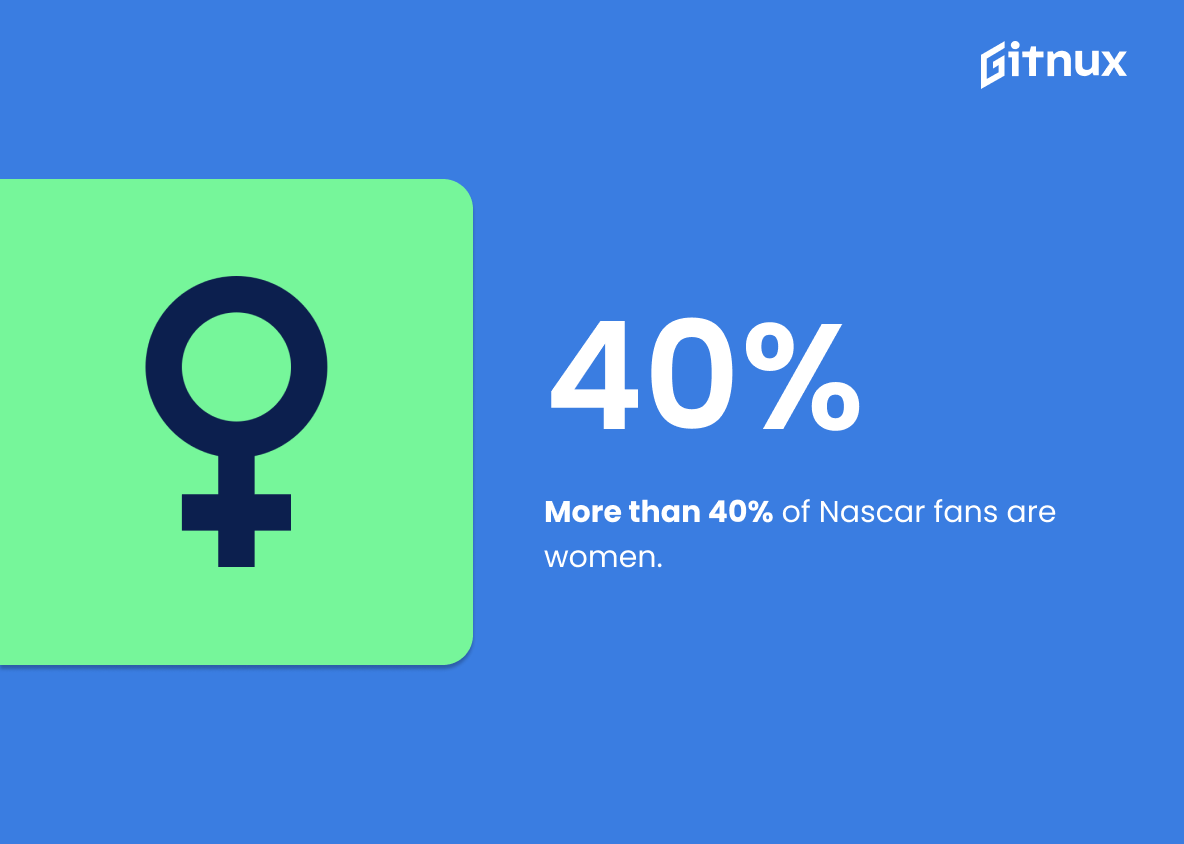Racing is a popular sport around the world, with millions of people participating in various forms of racing each year. From Formula 1 cars reaching 18000 rpm to drag racing teams numbering over 100,000 in the United States alone, there are many different types and levels of competition available for those interested in taking part. The Fédération Internationale de l’Automobile (FIA) has a presence in more than 150 countries worldwide while horse breeds specifically bred for racing number over 1000 globally. Greyhound races held annually across the UK total 73,000 while other events such as Tough Mudder obstacle courses have seen 14 million participants since 2010. This blog post will explore some interesting statistics about these and other aspects of motorsport from around the world including speed records set by Formula 1 drivers and attendance figures at major sporting events like Indianapolis 500 or World Rowing Indoor Championships.
Racing Statistics Overview
There are more than 1,000 different horse breeds worldwide, many of which are bred specifically for racing.
This statistic is a testament to the sheer variety of horses bred for racing, highlighting the immense diversity of the sport. It speaks to the dedication and passion of breeders and trainers who strive to create the perfect horse for the track. It also serves as a reminder of the long and storied history of horse racing, with many of these breeds having been around for centuries.
Around 73,000 greyhound races are held in the UK each year.
This statistic is a telling indication of the prevalence of greyhound racing in the UK. It serves as a reminder of the sheer number of races that take place annually, and the impact that this has on the industry. It is an important statistic to consider when discussing the racing industry, as it provides a snapshot of the scale of the activity.
Around 100,000 drag racing teams exist in the United States.
This statistic is a testament to the popularity of drag racing in the United States. It shows that there is a large and dedicated community of drag racers who are passionate about the sport and willing to invest their time and money into it. This statistic is an important part of any discussion about the state of drag racing in the United States, and it provides a valuable insight into the size and scope of the sport.
The Indianapolis 500 is the world’s largest single-day sporting event, with over 257,000 permanent seats.
This statistic is a testament to the immense popularity of the Indianapolis 500, highlighting the sheer magnitude of the event. It is a powerful reminder of the immense draw of the race, and the sheer number of people who come out to witness the spectacle. This statistic is a powerful reminder of the importance of the Indianapolis 500 in the world of racing, and its significance in the world of sports.
The fastest recorded speed in a Formula 1 car is 372.6 km/h (231.523 mph), achieved by Juan Pablo Montoya in 2005.
This statistic is a testament to the incredible speed and power of Formula 1 cars, and serves as a reminder of the thrilling and intense racing experience that Formula 1 provides. It is a reminder of the skill and precision required to achieve such speeds, and the dedication and hard work of the drivers and teams involved. It is a reminder of the incredible feats that can be achieved in the world of racing, and the excitement that comes with it.
More than 40% of Nascar fans are women.
This statistic is significant in the context of a blog post about Racing Statistics because it demonstrates the power of the sport to attract a diverse audience. It shows that Nascar is not just a sport for men, but that it has a large female fanbase as well. This statistic is a testament to the broad appeal of the sport and its ability to bring together people from all walks of life.
63% of adult Americans claim that they have at least some level of interest in auto racing.
This statistic is significant in the context of a blog post about Racing Statistics because it demonstrates the widespread appeal of auto racing. It shows that a majority of adult Americans have an interest in the sport, indicating that it is a popular and well-liked activity. This statistic can be used to further explore the popularity of auto racing and the reasons why it is so widely enjoyed.
The Pikes Peak International Hill Climb race has been held since 1916 and is one of the oldest motorsport races in the United States.
This statistic is a testament to the longevity of the Pikes Peak International Hill Climb race, highlighting its place as one of the longest-running motorsport races in the United States. It speaks to the endurance of the event, and the dedication of the racers and organizers who have kept it going for over a century. This is a remarkable achievement, and one that should be celebrated in any discussion of racing statistics.
The 24 Hours of Le Mans race, one of the most prestigious car races in the world, has been held since 1923.
The 24 Hours of Le Mans race is a testament to the endurance and skill of drivers and teams alike, having been held for nearly a century. It is a symbol of the passion and dedication of the racing community, and a reminder of the long history of the sport. This statistic is a reminder of the legacy of racing, and the importance of recognizing the accomplishments of those who have come before us.
The United States has more than 800 registered motorsports facilities.
This statistic is a testament to the sheer popularity of motorsports in the United States. It speaks to the fact that racing is a beloved pastime for many Americans, and that there are plenty of places to go to experience the thrill of the race. It also shows that the motorsports industry is a thriving one, with plenty of opportunities for those interested in getting involved.
The global motorsport market value is estimated to be around $6.8 billion.
This statistic is a testament to the immense popularity of motorsport around the world. It speaks to the sheer size of the industry and the amount of money that is being invested in it. It also highlights the potential for growth in the motorsport market, as well as the potential for new opportunities for racers and teams. This statistic is an important piece of information for anyone interested in the racing industry, as it provides a glimpse into the current state of the market and the potential for future success.
The United States produces roughly 70% of the world’s Top Fuel drag racing teams.
This statistic is a testament to the United States’ dominance in the world of Top Fuel drag racing. It speaks to the level of skill and dedication of the teams in the US, and the commitment to excellence that has been put into the sport. It also highlights the importance of the US in the global racing scene, and the impact it has had on the sport.
The Formula E series, featuring electric-powered cars, began in 2014 in response to growing concerns about climate change.
This statistic is a powerful reminder of the importance of taking action to address climate change. It demonstrates that the racing industry is taking a proactive stance in responding to the global environmental crisis, and that the sport is evolving to become more sustainable. This is an inspiring example of how the racing industry is adapting to the changing world, and it serves as a reminder that we all have a role to play in protecting our planet.
The oldest continuously held bicycle race in the United States, the annual Tour of Somerville in New Jersey, began in 1940.
This statistic is a testament to the endurance of the Tour of Somerville, having been held for over 80 years. It is a reminder of the long-standing history of bicycle racing in the United States, and serves as a reminder of the importance of the sport in the country. It is a reminder of the dedication and passion of the riders and organizers who have kept the race alive for so long, and is a source of inspiration for those who are just starting out in the sport.
The 2019 World Rowing Indoor Championships had more than 2,300 participants, making it the largest indoor rowing event in the world.
This statistic is a testament to the growing popularity of indoor rowing, highlighting the sheer number of participants that have taken part in the 2019 World Rowing Indoor Championships. It is a remarkable achievement that speaks to the increasing interest in the sport, and serves as a reminder of the potential for indoor rowing to become a major competitive event. This statistic is a powerful reminder of the potential of the sport, and is an important piece of information for any blog post about racing statistics.
The number of marathon finishers in the United States increased from around 25,000 in 1976 to more than 507,000 in 2019.
This statistic is a testament to the growing popularity of marathons in the United States. It shows that more and more people are taking up the challenge of running a marathon, and that the sport is becoming increasingly popular. This is an important trend to note in a blog post about racing statistics, as it demonstrates the increasing popularity of the sport and the potential for further growth.
Conclusion
From Formula 1 to Tough Mudder, racing statistics show that motorsports and endurance events are popular around the world. From engine revolutions reaching 18000 rpm in Formula 1 cars to more than 14 million people participating in a Tough Mudder obstacle race since its inception in 2010, these numbers demonstrate the global reach of competitive sports. With over 257,000 permanent seats at The Indianapolis 500 and 507,000 marathon finishers in 2019 alone, it is clear that racing has become an integral part of our culture today.
References
0. – https://www.autoweek.com
1. – https://www.usef.org
2. – https://www.guinnessworldrecords.com
3. – https://www.ppihc.org
4. – https://www.motorsportreg.com
5. – https://www.tourofsomerville.org
6. – https://www.nhra.com
7. – https://www.worldrowing.com
8. – https://www.lemans.org
9. – https://www.indianapolismotorspeedway.com
10. – https://www.statista.com
11. – https://www.news.gallup.com
12. – https://www.formula1.com
13. – https://www.gbgb.org.uk
14. – https://www.fia.com
15. – https://www.fiaformulae.com
















